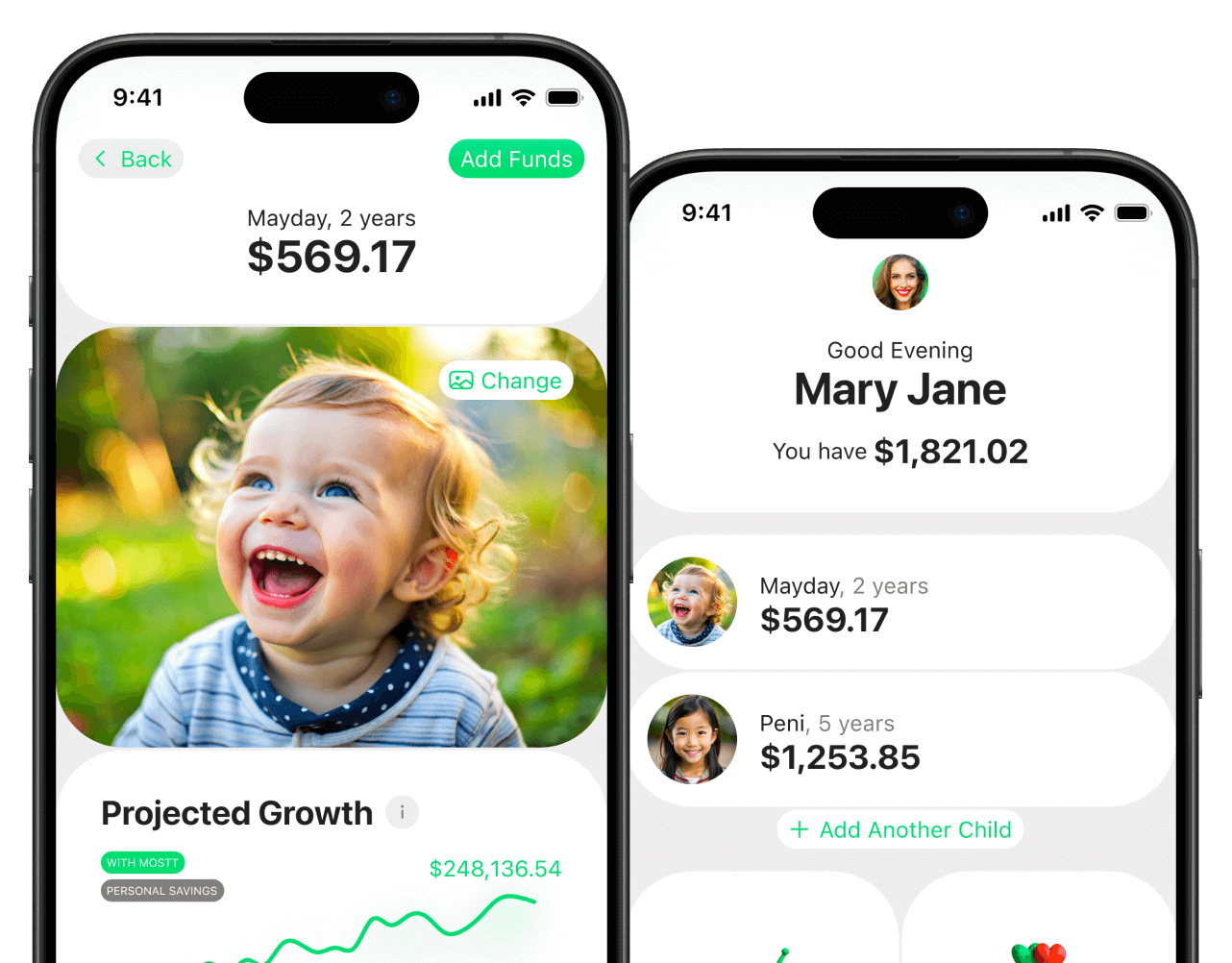Exploring the Future of Investing and Why Teaching Financial Basics Still Matters
Imagine your teenager scrolling through an app, and with a single tap, AI analyzes thousands of stocks, predicts trends, and automatically invests their money—all without them lifting a finger. Sounds like science fiction? Not really. AI and automation are already reshaping how adults invest, and it’s only a matter of time before kids have access to the same tools.
As parents, this raises a big question: If technology can do the heavy lifting, do our kids still need to learn the basics of money, investing, and financial planning? The short answer: yes.
Let’s break down why teaching financial literacy is still essential, even in an automated world, and how AI might change the game.
The Rise of AI in Investing
AI-driven investing is no longer just for Wall Street traders. Robo-advisors, algorithmic trading platforms, and AI-powered investment apps are making it easier than ever for anyone—yes, even teenagers—to start investing.
Here’s what’s happening:
-
Automated Portfolio Management – Platforms like Betterment and Wealthfront automatically adjust portfolios based on risk tolerance, age, and long-term goals. These systems rebalance investments, diversify assets, and keep your teen’s portfolio aligned with market trends—all without manual intervention. This means your kids can start investing early, giving them the power of compound interest long before adulthood.
-
Smart Analysis – AI can process millions of data points in minutes, analyzing historical patterns, global events, and company performance. What would take a human weeks or months to research, AI can do instantly, spotting trends that may impact investments. Your child could, for example, see how a new tech product or market policy might influence a company’s stock—and adjust their portfolio accordingly.
-
Personalized Recommendations – AI learns from individual behavior. If your teen tends to favor certain industries or responds to market swings with hesitation, AI can adapt recommendations to their habits and risk tolerance. This personalization creates a kind of “financial coach” that’s available 24/7.
The upside is huge: your kids could start investing earlier, learn faster from real-time feedback, and see the power of compound growth in action. But there’s a catch.
The Risk of Relying on AI Without Understanding Money
Technology can help, but it doesn’t teach critical thinking or financial responsibility. Imagine giving a teen a car but never showing them how to drive. That’s what it’s like to hand over investing entirely to AI without teaching the “why” behind decisions.
Without financial literacy, kids may:
-
Over-rely on technology – AI isn’t perfect. Markets are unpredictable, and algorithms can fail or make choices that aren’t aligned with your teen’s goals. Kids who blindly trust AI might panic during downturns or fail to adjust when circumstances change.
-
Miss critical lessons – Understanding concepts like diversification, risk tolerance, and compound interest isn’t just theory—it shapes long-term behavior. Kids who never learn these basics might not understand why a diversified portfolio reduces risk, or why it’s important to start investing early.
-
Struggle with financial planning – Investing is only one piece of financial health. Without learning budgeting, saving, and understanding debt, teens may rely on AI to “fix” everything while ignoring the bigger picture.
In short, AI is a tool, not a replacement for foundational knowledge. It can guide decisions, but it cannot teach judgment or responsibility.
Why Teaching Financial Basics Still Matters
Even in an automated investing world, financial education is the foundation for lifelong wealth. Here’s why:
-
Decision-Making Skills – AI can suggest moves, but kids need to understand the reasoning behind each recommendation. Teaching them the basics allows them to ask the right questions: “Why is this investment recommended? What are the risks? How does this fit with my goals?” These questions build critical thinking that no algorithm can replace.
-
Confidence and Independence – Understanding money builds confidence. A teen who knows why they’re investing in index funds, or why diversification matters, is more likely to make independent, smart decisions in the future. AI can inform them, but knowledge empowers them.
-
Long-Term Perspective – Investing isn’t just about instant gains. Learning principles like compound interest and the importance of patience helps teens see the long-term picture. They understand that even small investments today—like $20 a month—can grow into thousands over 10–15 years. AI can optimize the process, but the mindset must come from education.
-
Ethical Considerations – AI optimizes for profit and efficiency, not values. Teaching kids the basics of responsible investing and ethical decision-making ensures they align their financial choices with their personal values. They’ll know that investing isn’t just about numbers—it’s about impact.
-
Understanding Financial Mistakes – Everyone makes mistakes, even adults. By learning the basics, kids can spot errors before they cost money. For instance, understanding fees, taxes, or the dangers of chasing trends helps them avoid pitfalls that AI might overlook.
How to Introduce Kids to AI-Driven Investing
You don’t have to throw your teen into the deep end of algorithmic trading. Start simple and build understanding alongside technology:
-
Use Kid-Friendly Investment Apps – Platforms like Bloom and Greenlight make investing safe, simple, and fun for kids. They can start small, track growth, and experiment with AI-guided decisions without risking large sums.
-
Teach Basics First – Cover saving, budgeting, risk vs. reward, and compound interest before diving into AI tools. A teen who understands why a diversified portfolio reduces risk will use AI recommendations more wisely.
-
Simulate Decisions – Let kids make small investments and watch how AI adjusts. Discuss why the system made certain choices, what happened during market fluctuations, and how small adjustments impact long-term growth. This creates a feedback loop that reinforces learning.
-
Encourage Questions – Ask your teen to explain why they think AI made a move and what they might do differently. Encouraging dialogue builds analytical skills and helps them become thoughtful investors, not just passive users of technology.
-
Combine with Real-Life Lessons – Have kids track their allowance, savings, or small earnings from side hustles, and then use AI tools to invest a portion of that money. This makes investing tangible and connects lessons to everyday life.
The Future of Investing for Kids
AI and automation will continue to reshape investing. In the near future, your teen might:
-
Get real-time insights into ESG (environmental, social, governance) investments aligned with their values.
-
Receive AI-generated “learning nudges” that explain the reasoning behind recommendations in plain language.
-
Use simulations to understand how market events—from recessions to tech booms—impact investments.
These tools can accelerate learning, but they cannot replace the fundamentals: understanding money, making decisions, and learning from mistakes.
The most successful investors—young or old—combine technology with knowledge. AI can handle calculations, track performance, and suggest adjustments, but your child’s judgment, curiosity, and critical thinking remain essential.
Takeaway
AI and automation will change how our kids invest, making it easier, faster, and more accessible. But technology is only a tool. Teaching kids financial literacy—the basics of saving, budgeting, investing, and planning—is still essential.
As parents, we can give our children the best of both worlds: the power of AI and the wisdom to use it responsibly. By combining technology with strong financial foundations, we’re preparing the next generation not just to grow their money—but to make smart, informed decisions for a lifetime.
The goal isn’t to create young traders—it’s to raise financially confident, thoughtful, and responsible adults. And when AI takes care of the heavy lifting, your kids will have the knowledge to steer their investments with purpose and clarity.




